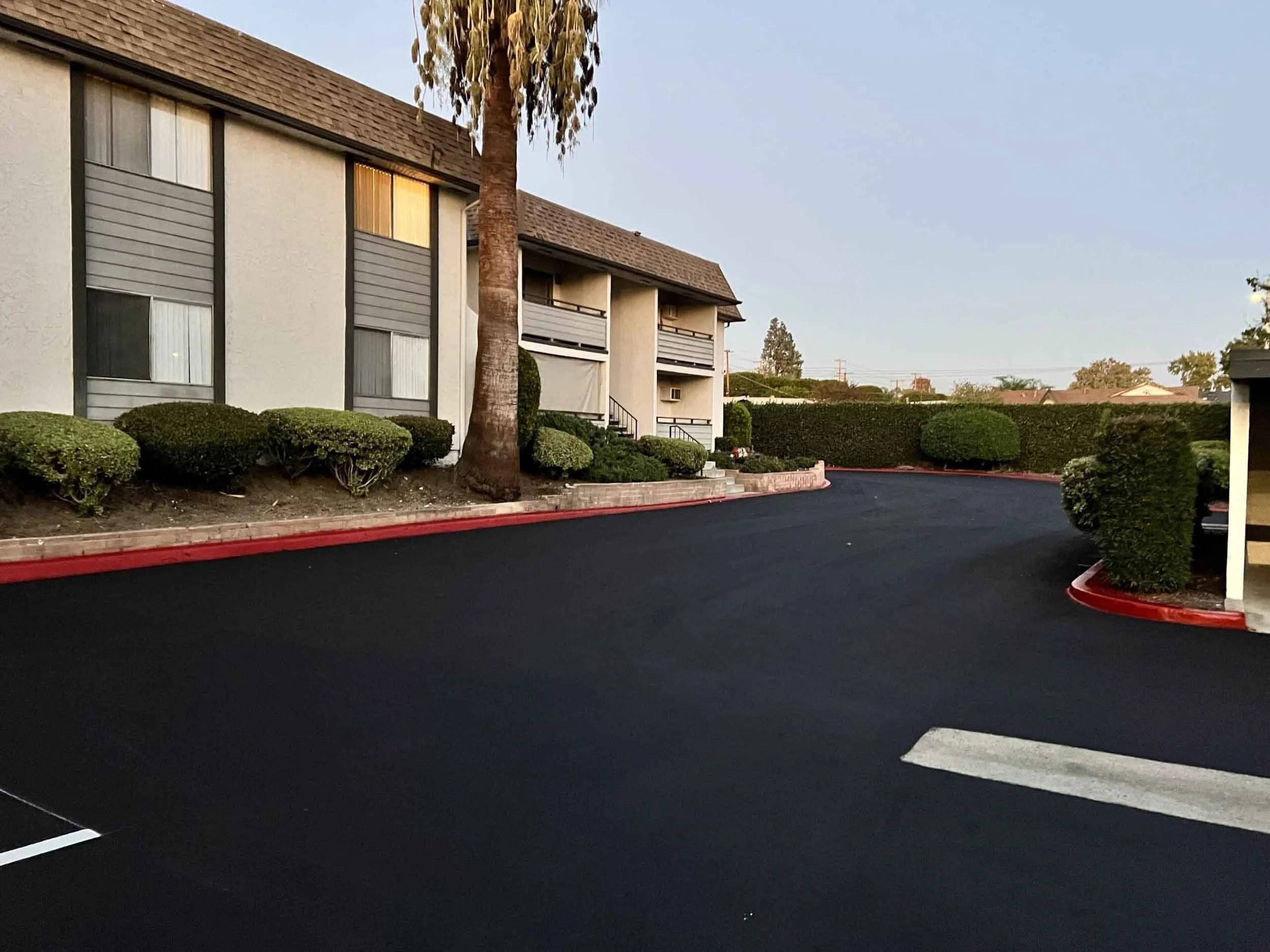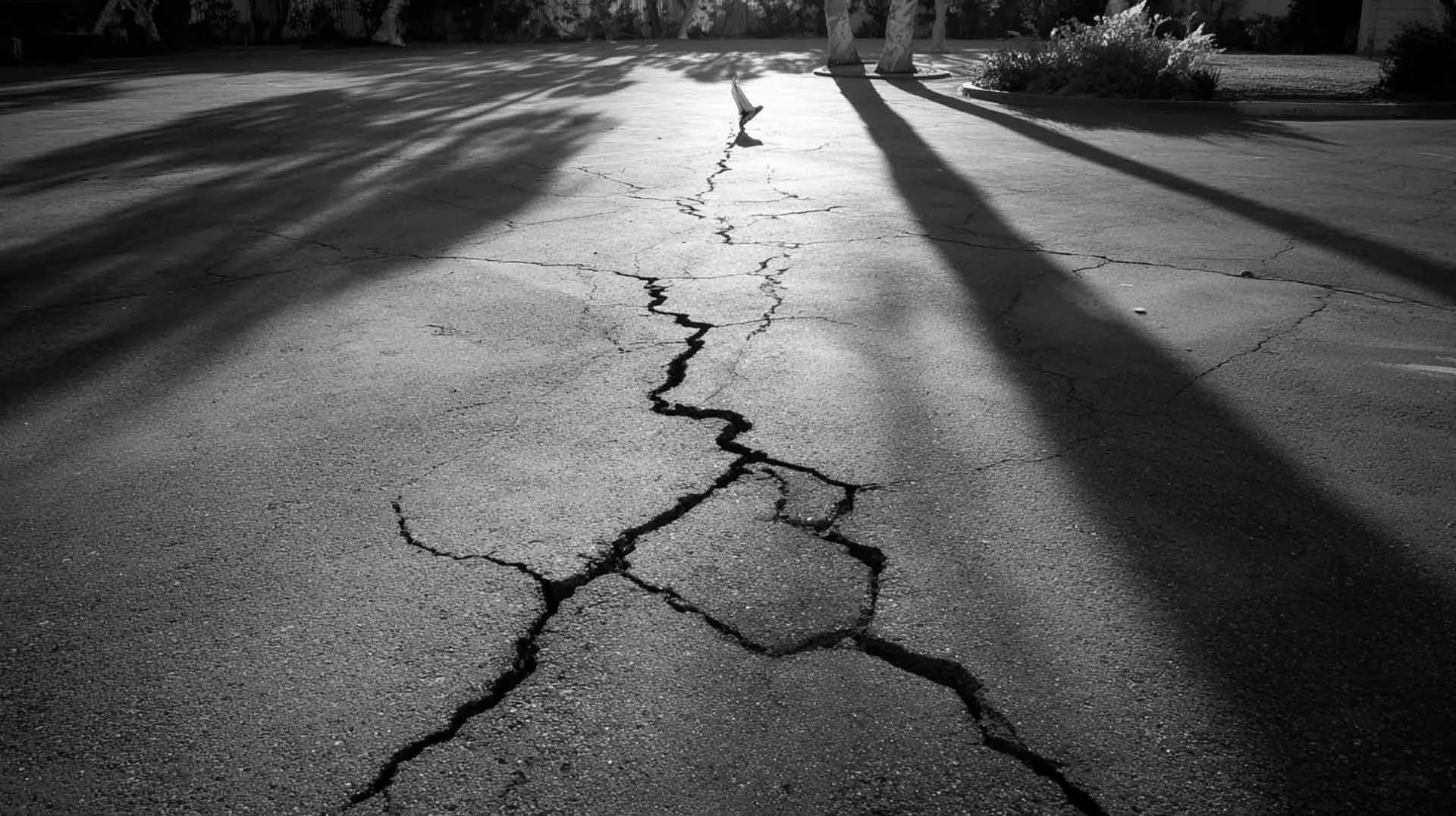Asphalt Maintenance: How to Extend the Lifespan of Your Asphalt Driveway
Proper asphalt maintenance keeps your driveway strong, safe, and looking professional. In Southern California, your pavement faces stress from sun, heat, and traffic. Without consistent driveway care, cracks, fading, and drainage issues appear sooner than you’d expect.
This guide shares expert, practical ways to improve asphalt longevity and get the most out of your surface for years to come.
Key Takeaways
Regular asphalt maintenance like cleaning, sealing, and crack repair keeps your driveway durable and professional-looking.
Good driveway care prevents water damage, edge crumbling, and early surface wear.
Planning seasonal maintenance improves asphalt longevity and lowers long-term repair costs.
In Southern California’s sun and heat, consistent sealcoating is essential to protect your investment.
Table of Contents
1. Asphalt Maintenance Starts with Regular Cleaning
Think of cleaning as preventive maintenance. It might seem minor, but dirt, oil, and debris can cause real damage over time. When debris blocks water flow or oil sits on the surface, it weakens the asphalt binder and accelerates deterioration.
What happens if you skip cleaning?
Dirt traps moisture, creating soft spots and early cracks.
Leaves and branches break down into acidic compounds that eat away at the surface.
Oil and fuel stains dissolve the binder that keeps asphalt strong.
Here’s how to clean your asphalt properly:
Sweep or blow off the driveway weekly to prevent buildup.
Rinse off oil or fuel stains right away using mild soap and warm water.
Avoid household cleaners with bleach or solvents — they damage asphalt.
Keep the edges clear of soil and plants to maintain proper water flow.
In hot, dry regions like SoCal, asphalt maintenance through regular cleaning is critical to prevent brittleness and surface fading.
2. Address Cracks Early with Preventive Asphalt Maintenance
Cracks are the most common and most ignored warning sign. They start small but expand with heat and moisture, leading to structural damage underneath. If water seeps in and reaches the base, you’re looking at costly repairs or full replacement down the line.
Why cracks happen:
Expansion and contraction from temperature swings.
Heavy vehicles stressing the same areas repeatedly.
Standing water softening the base.
Natural wear from aging and oxidation.
How to handle cracks properly:
Inspect the surface every 3–4 months, especially after heavy rain or heat.
Fill small cracks using high-quality asphalt filler to prevent spreading.
Patch potholes immediately before they erode the sublayer.
If cracks reappear quickly, schedule a professional inspection, the base may be compromised.
Staying proactive with asphalt maintenance stops cracks before they cause deeper problems. Quick, small repairs now can save thousands later.
3. Sealcoating for Long-Term Driveway Care and Asphalt Longevity
Sealcoating is one of the most effective steps in protecting your asphalt driveway. It acts like sunscreen for your pavement, shielding it from UV rays, oil spills, water, and oxidation.
Without a sealcoat, asphalt oxidizes and loses its flexibility, making it more likely to crack and fade. In SoCal’s climate, this process happens much faster than in cooler regions.
Benefits of regular sealcoating:
Protects against UV rays that dry and weaken asphalt.
Prevents oil and gas from penetrating and softening the surface.
Adds a deep black finish that improves curb appeal.
Makes future cleaning and maintenance easier.
When to apply:
Every 2–3 years for residential driveways; more often for high-traffic areas.
Wait at least 90 days after a new installation to allow curing.
Apply when temperatures are between 60–90°F and weather is dry.
Sealcoating is the cornerstone of effective asphalt maintenance. It keeps your surface flexible, durable, and protected against Southern California’s harsh sun.
4. Drainage Management: The Hidden Key to Asphalt Longevity
Even the strongest asphalt fails if drainage is ignored. Standing water is the silent destroyer of pavement, it seeps into cracks, erodes the base, and causes sinking or potholes.
Signs of poor drainage:
Puddles form in the same spots after rain.
The surface feels spongy or uneven.
Water runs toward your home or landscaping instead of away.
Edges crumble faster than the rest of the driveway.
How to fix and prevent drainage issues:
Grade your driveway so water flows away from buildings and structures.
Install trench or channel drains near low points.
Clear gutters and downspouts regularly.
Avoid overwatering nearby lawns or gardens that saturate asphalt edges.
Usually, rainfall may be infrequent, but when it comes, it’s heavy. Proper drainage ensures asphalt longevity by preventing erosion and maintaining the integrity of your base layer.
5. Protect Driveway Edges and Avoid Heavy Loads
Driveway edges often break down first because they’re unsupported. Cracks along the edge can quickly spread, especially if the area is exposed to frequent traffic or moisture.
What weakens edges:
Vehicles parked too close to the edge.
Lack of soil or gravel support along the sides.
Erosion from sprinkler runoff or poor drainage.
Edge protection tips:
Keep heavy trucks, trailers, or dumpsters off the edge area.
Use compacted gravel or concrete curbing to reinforce the sides.
Add soil or mulch along borders to reduce runoff.
Turn vehicle tires while moving, not while stationary, to avoid tearing the surface.
Proper edge protection is a simple yet powerful driveway care strategy that extends asphalt longevity and prevents avoidable cracking.
6. Keep Vegetation Under Control
Weeds, grass, and roots can push through small cracks and break up the pavement from below. This problem starts small but quickly worsens as roots expand.
To control vegetation:
Remove weeds the moment they appear.
Use natural or mild weed killers around edges, avoid chemicals that can harm asphalt.
Keep trees with large roots (like ficus or eucalyptus) planted well away from paved areas.
Add gravel or edging to block root intrusion.
Regular asphalt maintenance isn’t just about the surface, it’s about what’s happening underneath. Managing vegetation is one of the easiest ways to protect structural integrity.
7. Plan an Annual Asphalt Maintenance Schedule
Having a set schedule for asphalt maintenance keeps small tasks from piling up. Many property owners wait until they notice damage, but by then, repairs are more expensive.
Sample yearly schedule for SoCal:
Spring: Inspect for cracks, potholes, and drainage issues after winter rain.
Summer: Sealcoat your driveway for UV protection and fresh appearance.
Fall: Sweep up debris and check for oil or fluid stains.
Winter: Limit heavy loads during colder months and monitor water flow after storms.
If you manage multiple properties or oversee an HOA, creating a shared calendar ensures routine driveway care. Consistent attention prevents downtime and large-scale resurfacing projects later.
Final Thoughts on Asphalt Maintenance
Good asphalt maintenance is simple when you stay consistent. Regular cleaning, sealing, and inspection help your driveway last longer and look its best year-round.
If you’d like help evaluating your pavement, reach out for a free quote, we’re happy to take a look and help you plan your next project.
FAQs
Q1: How to make an asphalt driveway last longer?
Stay consistent with cleaning, sealing, and small repairs. Keep water off the surface and manage heavy loads for better asphalt longevity.
Q2: What is the average lifespan of an asphalt driveway?
Most driveways last 20–30 years with proper asphalt maintenance. In Southern California, sealcoating and good drainage are key to reaching that range.
Q3: How much does it cost to extend an asphalt driveway?
Costs typically range from $4–$10 per square foot, depending on grading, materials, and site layout.
Q4: Can I put new asphalt over old asphalt?
Yes, if the base is stable. Fix cracks or drainage issues first to make sure the new asphalt overlay bonds properly.
CITY SERVICE ASPHALT
Reliable paving, sealcoating, and repair experts serving Corona, Riverside, and Orange County. Providing long-lasting asphalt solutions built to withstand California’s weather.
GET IN TOUCH
769 Beverely Road, Corona CA 92879









